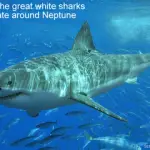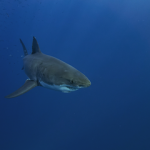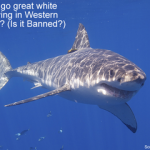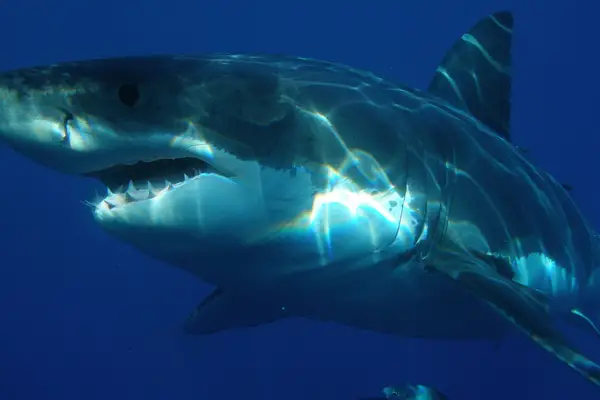
The top three great white shark interesting facts
Ever since Jaws the movie, great white sharks (Or Carcharodon carcharias) have been feared by many. They were given a bad reputation by Jaws for the sake of Hollywood. But are they really that bad? No not really, as they are far more fearsome in our imaginations than in reality. But what are three interesting facts about the great white shark?
What are three interesting fun facts about the great white shark?
- Humans are not actually on a great white’s hunting menu.
- Great white sharks are the largest predatory fish in the ocean.
- Great white sharks are warm-blooded creatures a bit like mammals.
The best way to dive with great white sharks is by a Mexico scuba diving liveaboard. You can check the latest and best deals on Mexico liveaboards using the following window:
Top three interesting facts about great white sharks in more detail
There are many interesting facts about great whites, and I’ve included a 50 more cool facts further down in this article. But for me, these first three are the more interesting.
Having said that, I welcome your feedback in the comments below of what facts you find more interesting than my top three!
Let’s take a look at each of these three facts in a bit more detail.
More Reading: Shark cage diving San Diego, California (San Diego great white shark)
Of the 100 or so annual shark attacks each year, around one third to 50% are attributed to great white sharks.
Most of these shark attacks aren’t fatal and certainly very few are ever attributed to scuba diving. But research has shown that attacks by great whites is from their just being curious.
More Reading: Is It Dangerous To Scuba Dive With Sharks? (Will I Be Eaten?)
When they ‘attack‘ a human they are “sample biting” to test and see what they are. In most cases great white sharks release their victim, as their intent was never to preying on humans in the first place.
But the problem with them “sample biting” is in some cases their large sharp teeth leave major and lasting damage. Which in some cases ends up being fatal damage!
“Of the 100-plus annual shark attacks worldwide, fully one-third to one-half are attributable to great whites. However, most of these are not fatal, and new research finds that great whites, who are naturally curious, are “sample biting” then releasing their victims rather than preying on humans.”
National Geographic – Great White Shark
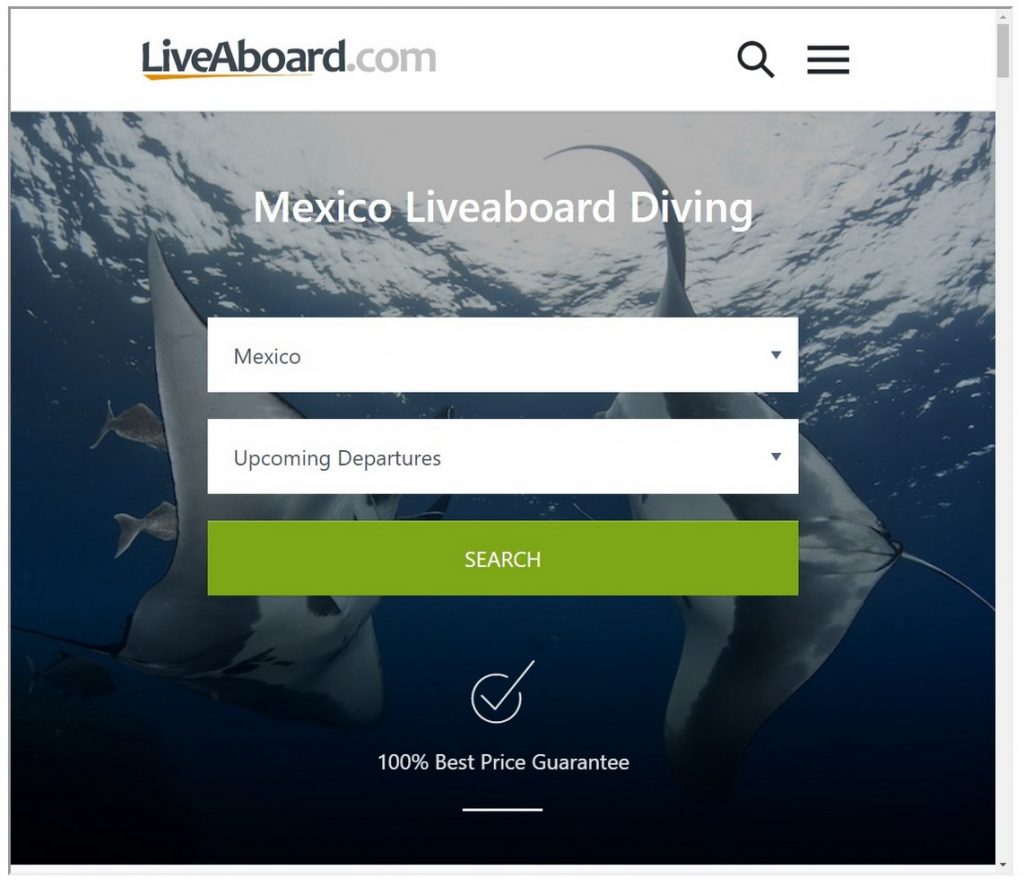
2. Great white sharks are the largest predatory fish in the ocean
Whilst the great white shark isn’t the largest fish in the ocean, they are the largest predatory fish. The largest fish medal goes to the whale shark instead, which are plankton feeders.
More Reading: Best Place To Scuba Dive With Whale Sharks (The Biggest Fish In The Oceans)
The female great whites are the larger of the species, which is unusual in the animal kingdom.
In many species it’s the male that is larger. On average a great white shark grows to around 4.6 metres (15 feet), but can grow to a length of 6.1 metres (20 feet).
A great white shark of this length would weigh in at around 2,268 kilos (5,000 pounds). That’s one huge fish. See below for the largest recorded great white shark.
More Reading: Why do the great white sharks congregate around Neptune Island?
3. Great white sharks are warm-blooded creatures
One of the three interesting facts about great white sharks is that unlike all other fish, they are warm blooded.
This means they can regulate their own body temperature in a similar way to how we can and other mammals do.
This characteristic about great whites allows them to adapt to different water temperatures. However, great white sharks are mostly found in waters no warmer than 24ºC (75ºF), but as cold as 12ºC (54ºF).
Keeping body temperature warm burns calories, and a lot of calories. This is why their diet mostly consists of blubber and energy rich prey like sea lions and seals.
Which in turn is why they are found in the habitats they are found in. That is, near to colonies of seals or seal lions.
More Reading: Where is the best place to cage dive with sharks (5 Best great white spots)
Another 50 cool fun facts about great white sharks
Along with sharing what I think are the three most interesting facts about great white sharks, here are 50 more interesting and cool facts about great white sharks.
50 cool fun facts about great white sharks:
- Their common name is the great white shark, but their scientific species name is Carcharodon Carcharias. Watch Jaws the movie and you’ll see them use this name.
- Great white sharks can live for up to 73 years.
- Females reach maturity at around 33 years old.
- The heaviest great white shark ever recorded weighed 3,110 kgs (6,860 lb).
- The longest but unverified length of a great white shark was reported to have measured 7.4 metres (24 feet) in length.
- Female great white sharks grow much larger than the males.
- Of the 100+ annual shark attacks worldwide, between one-third to one-half are attributable to great whites.
- Great white sharks are naturally curious, which is why they mistakenly bite humans.
- Great white sharks can detect one drop of blood in 100 litres (25 gallons) of water, which is detected using an organ called the olfactory bulb.
- They can sense small amounts of blood up to 5 kilometres (3 miles) away.
- The tongue of a great white shark is known as a Basihyal, which is made from cartilage.
- Great white sharks don’t have bones, but instead have cartilage.
- Whilst great whites have slate-grey upper bodies to blend in with the rocky coastal sea floor for camouflage from their prey, they get their name from their white underbellies.
- Their streamlined torpedo-shaped bodies with powerful tails can propel them through the water at speeds of up to 56 kilometres (35 miles) per hour.
- Despite their huge size, great whites are able to breach the water completely, which is what often happens when they predate on seals and sea lions.
- Their mouths are lined with up to 300 serrated and triangular teeth, which are arranged in several rows.
- The largest great white shark tooth found was 8.9 cm (3.5 inches) long.
- They have six senses, which include sight, smell, touch, taste, hearing, and electroreception.
- Like all sharks which have a “Sixth sense“, they have organs called the ampullae of Lorenzini that can sense the tiny electromagnetic fields generated by animals.
- Great whites are able to detect the heartbeat of prey using their ampullae of Lorenzini.
- The bite force of of a great white shark is around 4,000 psi, which is 10 times the bite force of a lion!
- They are mostly solitary hunters and spend most of their lives alone except during mating season when they are known to hunt in packs.
- Great whites will not only kill prey to eat, but are also happy to consume carrion too. They are often seen devouring whale carcasses.
- It is estimated that great white sharks eat on average around 11 tons of food every year.
- Great white sharks are able to roll their eyes to the back of their heads whenever they attack, which is to protect their eyes from getting damaged during the attack.
- White sharks tend to hunt first thing in the morning at low light and low visibility so their prey has difficulty in sporting their approach.
- Great whites use a technique known as “spy hopping,” which is when they peak their heads above the surface of the water to look for prey.
- Due to overfishing and accidental catching in gill nets they are considered a vulnerable species.
- Great white sharks live and hunt on the coast of every continent in the world, except in the cold waters of Antarctica.
- Great whites are found in large numbers around southern Australia, South Africa, California and Northeastern United States.
- They are found in fewer numbers in the Azores, Brazil, the Caribbean, northwestern Africa, eastern Africa, the Seychelles, Madagascar, Mauritius, Sri Lanka, northern Australia, New Caledonia, the Philippines, the Mediterranean, Jersey, New Zealand, and Hawaii.
- Most of the world’s great white sharks live off the coast of South Africa near Dyer Island, which is referred to as “Shark Alley.”
- Great whites can swim to more than 1,200 metres (3,937 feet) deep.
- They are considered pelagic fish.
- Great white sharks breathe by a process known as ram ventilation, which means they have to keep swimming or else they’ll drown. As they swim, water is ‘rammed‘ into their mouths and out through their gills, which extract oxygen from the water.
- Great whites are considered social creatures and are known to travel in a group called a school or a shoal.
- In three shark generations or 159 years to 2010, the white shark is estimated to be increasing in abundance in the Northeast Pacific and Indian Ocean, but is declining in abundance in the Northwest Atlantic and South Pacific.
- Great whites will swim into estuaries.
- Unfortunately, white shark fins and jaws have a high market value, with large fins used as display items.
- White sharks are pregnant for 11 months.
- Baby great white sharks are called a pups.
- They give birth to live young having small litters of between 2-12 pups.
- When great white pups are born they are 1.2-2.5 (4-8 feet) long.
- Due to their need to move constantly, great whites are very difficult to keep in captivity. Whenever they have been held captive they die soon after being caught.
- Great whites use their spinal cord to regulate their movement and not their brain, which means they can shut down their brains but still keep swimming. Which means they can sleep on the move.
- They can eat up to a quarter of their body weight in just one meal.
- Great white sharks can go without food for weeks.
- Great White Sharks have been swimming in the Earth’s oceans for around 16+ million years.
- Predators of great white sharks include humans and killer whales (or orcas).
- Great White Sharks become motionless when flipped on their backs, which is known as “tonic immobility” and is practiced by killer whales on great whites.
How great white sharks are attacked by killer whales
Great white sharks have been found washed up on beaches after being attacked and killed. Are these killing the work of orca? And how would orca hunt down a great white? #SharkWeek #SharkWeekDiscoveryUK
More Reading: Can you go great white shark diving in Western Australia? (Is it Banned?)
I hope you enjoyed this article about what are three interesting facts about the great white shark
I’d love to hear from you. Tell us about your adventures of diving and snorkeling, in the comments below. Please also share your photos. Either from your underwater cameras or videos from your waterproof go-pro’s!
If this article hasn’t answered all of your questions. If you have more questions either about snorkeling or scuba diving (or specifically about what are three interesting facts about the great white shark), please comment below with your questions.
There will also be many more articles about scuba and scuba diving safety tips (and on snorkeling too) for you to read and learn about this fabulous sport.
Have fun and be safe!
More Reading: My Great White Shark Story In South Africa (But Didn’t Get To Dive With It)

